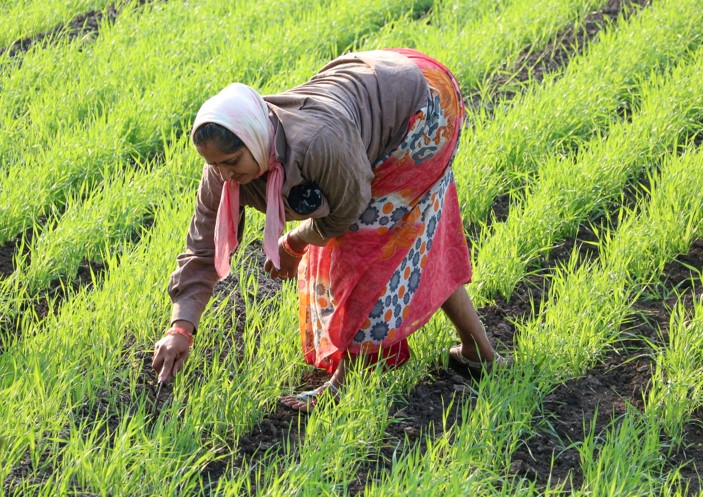
Informing rainfall risk insurance for farmers in Gujarat, India

Context
Approximately 2.5 billion people dependent on agriculture suffer because of crop loss due to weather-based risks. Only 6 percent of the global population is covered by agriculture insurance. Access to insurance is likely to provide farming communities with resilience to weather-based shocks.
Between 2006 and 2014, the Institute of Financial Management and Research partnered with the Self Employed Women’s Association to conduct a panel study in 60 villages of Gujarat to examine the potential and limitation of rainfall risk insurance in India.
The eight-year study contributed to the growing evidence base dedicated to understanding whether insurance positively impacts agricultural investment decisions of farmers, and in turn, agricultural income, consumption and welfare.
The study was carried out in 60 treatment villages and evaluated randomly assigned information and incentives for households considering rainfall risk insurance. Sixty randomly selected villages in the Ahmedabad, Anand and Patan districts were offered the product, while a control group of 48 villages in the same districts was not.
Evidence
The findings indicated that even though households experienced financial security from premium payouts, the rainfall risk insurance did not influence the agricultural investment decisions of the households.
The results revealed poor prospects for the programme, with shallow demand as buyers preferred single policies unless offered discounts on a bundle of policies.
The insurance product tested in the evaluation was found to have insignificant effects on income and consumption, but some marginal evidence indicated that receiving insurance payouts led to decreases in amounts held in savings. Results on well-being were not significant.
Notably, the results showed noteworthy evidence of decreases in informal transfers received from peers, suggesting that weather insurance may act as a substitute for informal insurance mechanisms.
The evaluation also revealed low take-up and interest from farmers, which the authors linked to several factors such as high premiums, low awareness and late payouts.
Evidence impacts
Type of impact: Close a programme
When evaluation or review findings inform decisions to stop implementation or planned scale-up of a programme or its components.
This is one of 3ie’s seven types of evidence use. Impact types are based on what we find in the monitoring data for an evaluation or review. Due to the nature of evidence-informed decision-making and action, 3ie looks for verifiable contributions that our evidence makes, not attribution.
Read our complete evidence impact typology and verification approach here.
Close windowPoor coverage coupled with weak performance in providing an effective safety net informed SEWA’s decision to discontinue the programme. Despite eight years of sales of the insurance product, the study revealed no systematic impact of the insurance on agriculture investment decisions or long-term effects of access to insurance at the household level. The findings strongly indicated low uptake of the insurance product among farmers due to delayed payouts, high premium rates and poor awareness among farmers.
Suggested citation
International Initiative for Impact Evaluation (3ie), 2021. Informing rainfall risk insurance for farmers in Gujarat, India (online summary), Evidence Impact Summaries. New Delhi: 3ie.
Related
This SEWA working paper profiles the rainfall risk insurance pilot programme and why it was discontinued.
Evidence impact summaries aim to demonstrate and encourage the use of evidence to inform programming and policymaking. These reflect the information available to 3ie at the time of posting. Since several factors influence policymaking, the summaries highlight contributions of evidence rather than endorsing a policy or decision or claiming that it can be attributed solely to evidence. If you have any suggestions or updates to improve this summary, please write to influence@3ieimpact.org